Archaeological Site: Smoke House
Introduction
Author-Uploaded Audio
Listen to a narration of this entry's description by Fort Hill User.
Text-to-speech Audio
Images
Excavation at Fort Hill
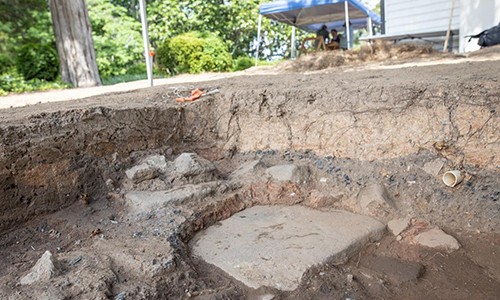
Sifting From Above
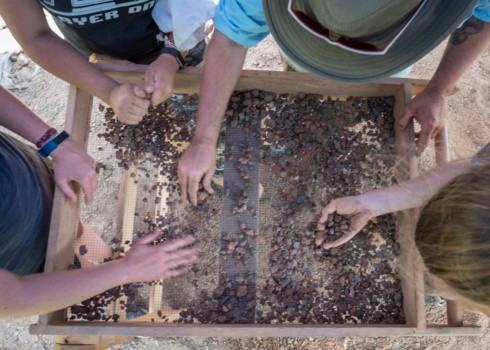
Discovering Stories Previously Untold
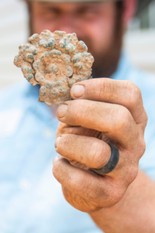
Pieces of the Past-China
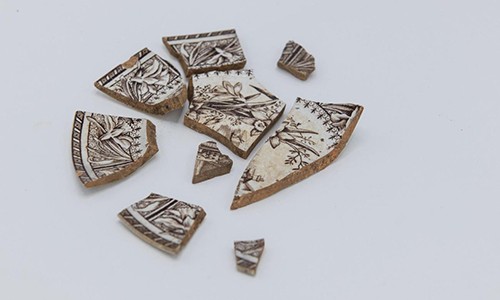
Pieces of the Past
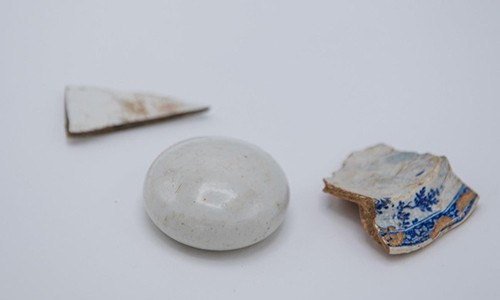
Backstory and Context
Author-Uploaded Audio
Listen to a narration of this entry's description by Fort Hill User.
Text-to-speech Audio
Behind the main dwelling house, along a gravel path framed by a row of fig trees, stood a series of outbuildings. The Smoke House stood apart from the other buildings and was not far from the quarters of the enslaved domestic laborers. On the other side of the row of outbuildings, cedar hedges and plum trees offered shade and helped to control the mosquitoes around the buildings.
Since outbuildings, like the exterior Kitchen and the Smoke House,produced heat, they were often built separate from the main dwelling house. This reduced the amount of heat coming into the dwelling house, while also preventing a potential fire from spreading to the dwelling house.. These outbuildings were the domain of the enslaved domestic laborers, and their skills were crucial to the functioning of the plantation.
Unfortunately, there are no known records at this time to know who were the enslaved persons who operated the Smoke House. Historic Properties is undergoing research to learn more about the enslaved community at Fort Hill in order to share the full and complete history with the public.
In the summer of 2018, an archaeological excavation of the grounds surrounding Fort Hill began as an introductory archaeological field school led by Dr. David Marcus of the Clemson University Anthropology Department. The excavation focused on the ground where the various plantation outbuildings once stood in an attempt to learn more about the lives of the African Americans at Fort Hill. Since very little can be known about those enslaved at Fort Hill from their perspective, the material history they left behind is one more way to access the stories left untold. The Fort Hill Archaeological Project has “allowed for the recovery of a large amount of archaeological materials dating to the early college period” (1).
Sources
- Archaeological Field School at Fort Hill, accessed May 21, 2020, https://cdnapisec.kaltura.com:443/index.php/extwidget/preview/partner_id/954571/uiconf_id/29461131/entry_id/1_yeo2o4wv/embed/dynamic.
“The African American Experience at Fort Hill | Clemson University, South Carolina,” accessed May 21, 2020, https://www.clemson.edu/about/history/properties/fort-hill/african-americans1/.
“Educational Resources | Clemson University, South Carolina,” accessed May 21, 2020, https://www.clemson.edu/about/history/properties/ed.html.
“A Traveller” [sic], “A Visit to Fort Hill: The Residence of the Hon. John C. Calhoun, Near Pendleton, S.C.,” The New York Herald, July 26, 1849, Morning Edition edition.
Ernest McPherson Lander, The Calhoun Family and Thomas Green Clemson: The Decline of a Southern Patriarchy and The Life and Times of Ella Lorton, a Pendleton SC Confederate (Columbia, S.C.: University of South Carolina Press, 1983).
“Archaeological Field School at Fort Hill | Clemson University, South Carolina,” accessed May 21, 2020, https://www.clemson.edu/about/history/properties/fort-hill/archeological-field-school.html.
“Clemson Archaeology Students Return to the Earth to Reveal the Stories of Those Enslaved on University Property,” Newsstand | Clemson University News and Stories, South Carolina, accessed July 10, 2020, https://newsstand.clemson.edu/clemson-archeology-students-return-to-the-earth-to-reveal-the-stories-of-those-enslaved-on-university-property/.
“Clemson Archaeology Students Return to the Earth to Reveal the Stories of Those Enslaved on University Property,” Newsstand | Clemson University News and Stories, South Carolina, accessed July 10, 2020, https://newsstand.clemson.edu/clemson-archeology-students-return-to-the-earth-to-reveal-the-stories-of-those-enslaved-on-university-property/.
“Archaeological Field School at Fort Hill | Clemson University, South Carolina,” accessed May 21, 2020, https://www.clemson.edu/about/history/properties/fort-hill/archeological-field-school.html.
“Archaeological Field School at Fort Hill | Clemson University, South Carolina,” accessed May 21, 2020, https://www.clemson.edu/about/history/properties/fort-hill/archeological-field-school.html.
